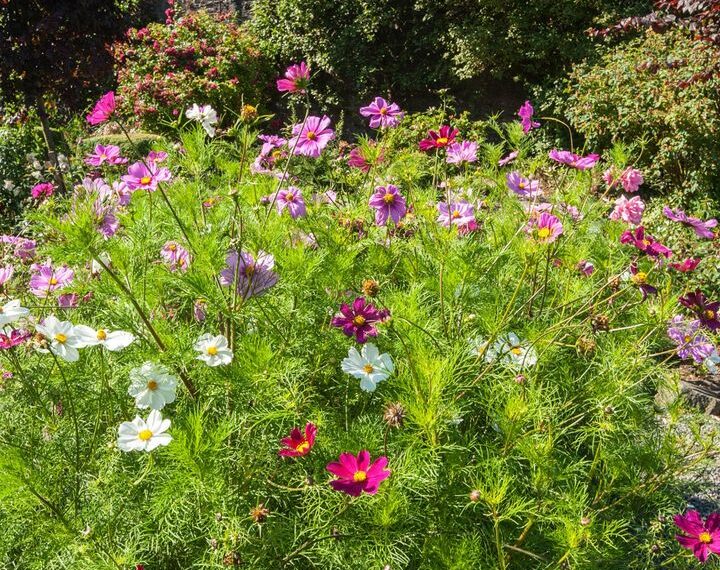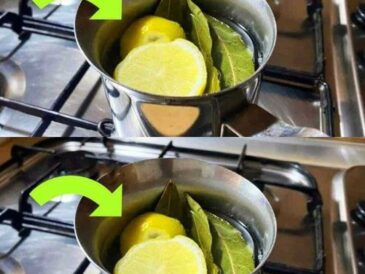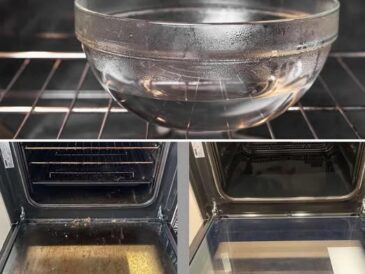This article contains affiliate links
Filling your garden with an abundance of gorgeous flowers can be as simple as scattering seeds on the ground in spring.
It’s really that easy. Pick a sunny site, amend the soil with compost, plant your seeds according to the packet directions, irrigate, and walk away.
Starting flowers and other ornamentals from seed is – by leaps and bounds – far more economical than purchasing starter plants and flats from the plant nursery every year.
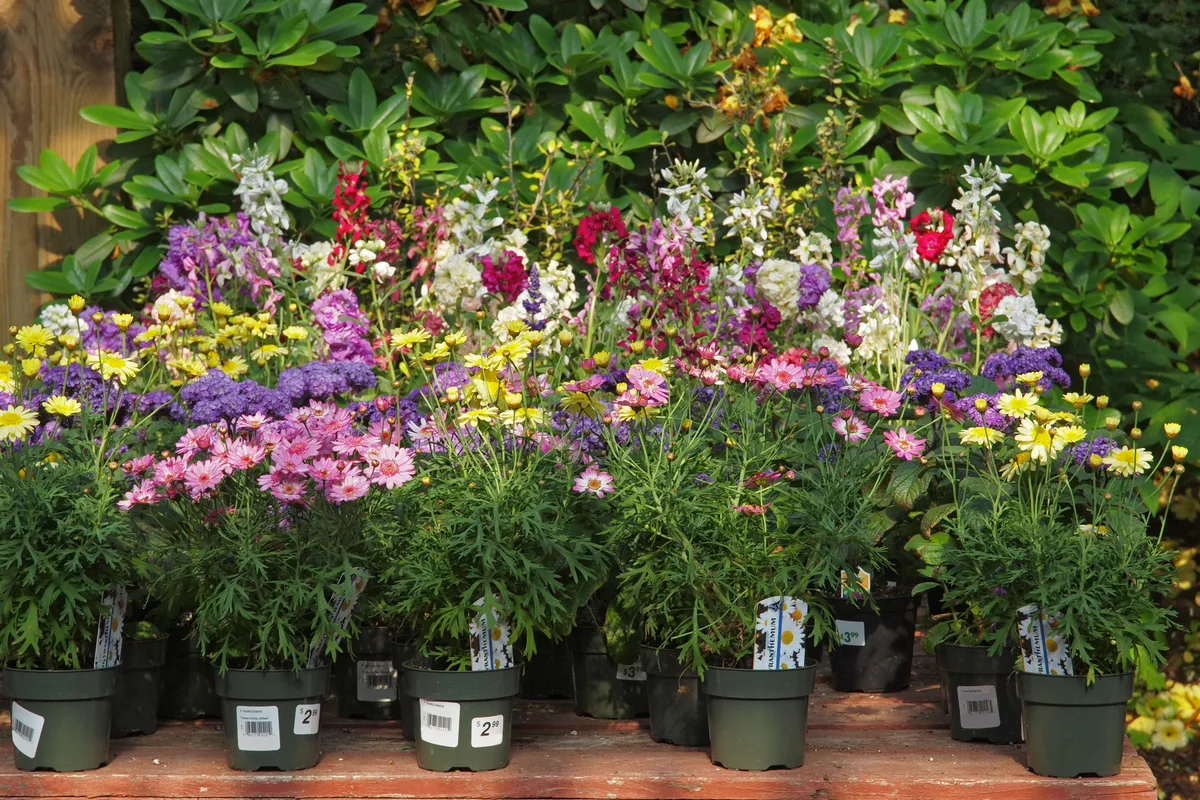
And many annual flowers that grow well from seed tend to be self-sowers – buy and plant them once, and they will return again and again.
Seed catalogs have a wider selection of cultivars to choose from as well. Growing from seed opens up the door to the most unusual and enchanting varietals not typically available as plugs from the garden center.
Choose among annuals that will provide a glorious show in their first (and only) year. Or perennials that bloom from year two and onward. Selecting a mix of annuals and perennials will ensure your gardens will always be in bloom.
Here we’ve gathered up the easiest flower seeds to direct sow straight into your garden.
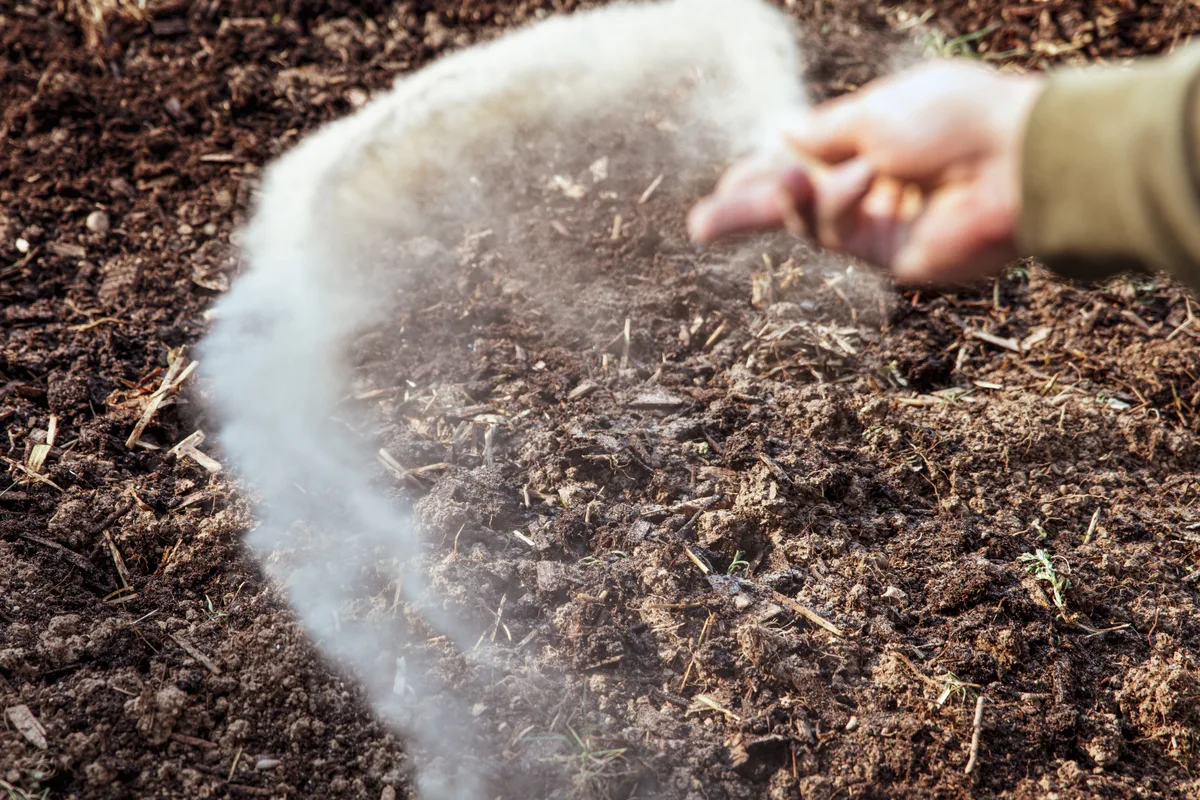
These foolproof, beginner-level, brown thumb friendly flowering plants are hardy, low-maintenance, and mostly trouble-free, readily establishing themselves in your garden in only a season or two.
1. Columbine (Aquilegia spp.)
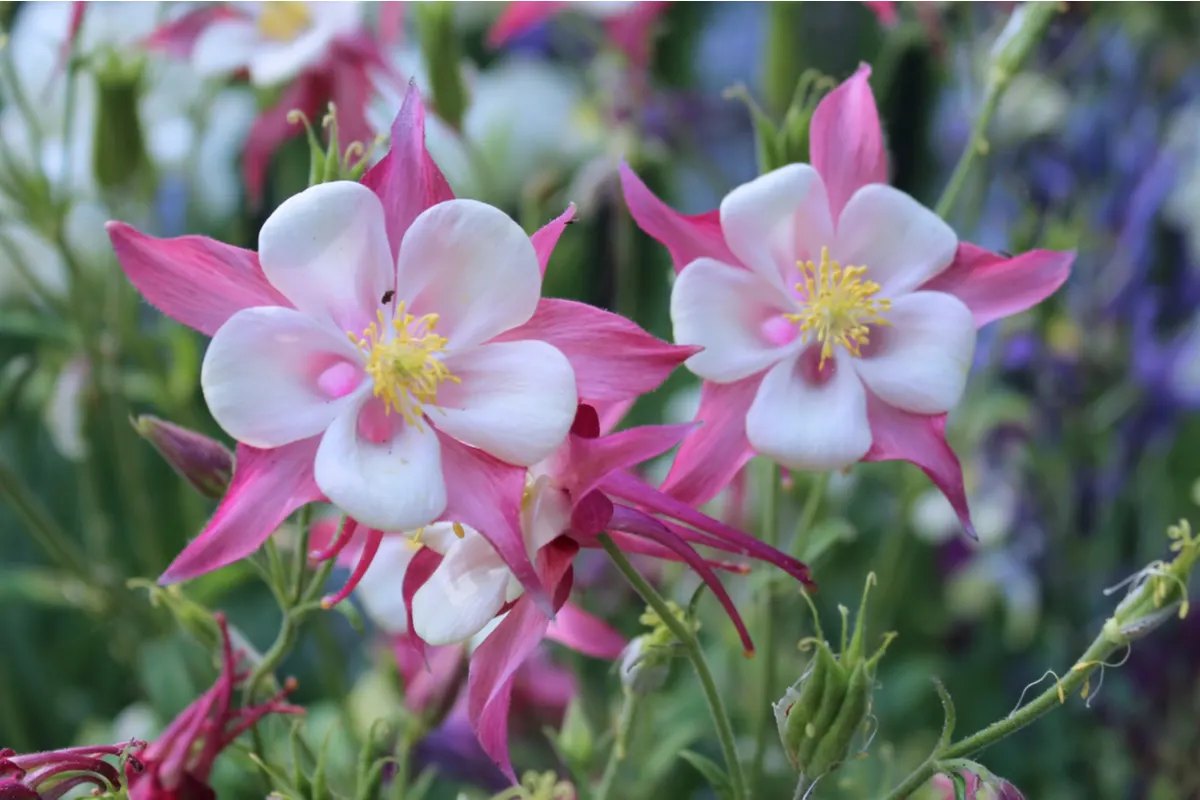
Columbine is a huge genus of flowering plants that range in meadows and woodlands across the Northern Hemisphere.
There’s 70 species of columbine, and nearly as many hybrids and crosses, giving gardeners a vast amount of choice in colors and flower forms.
The classic columbine is a hardy, bushy, clump-forming perennial that blooms with dainty bell-shaped flowers in late spring. Columbine is easily identified by the five elongated petals, known as the spurs, that frame the flowerhead in a starry shape.
Columbine grows exceedingly well from seed. Although it’s a short-lived perennial that will eventually die back after 2 to 3 seasons, columbine will naturalize itself in the garden through ample self-seeding.
Get columbine started by sowing seeds in autumn or mid-winter. Columbine seeds need a 3 to 4 week chilling period to trigger germination. When the soil has warmed in spring, columbine will emerge in 30 to 90 days.
Hardiness zone: 3 to 9
Sun exposure: Full sun to part shade
Bloom time: April to May
Attracts: Butterflies, hummingbirds, and bees
2. Pansy (Viola spp.)
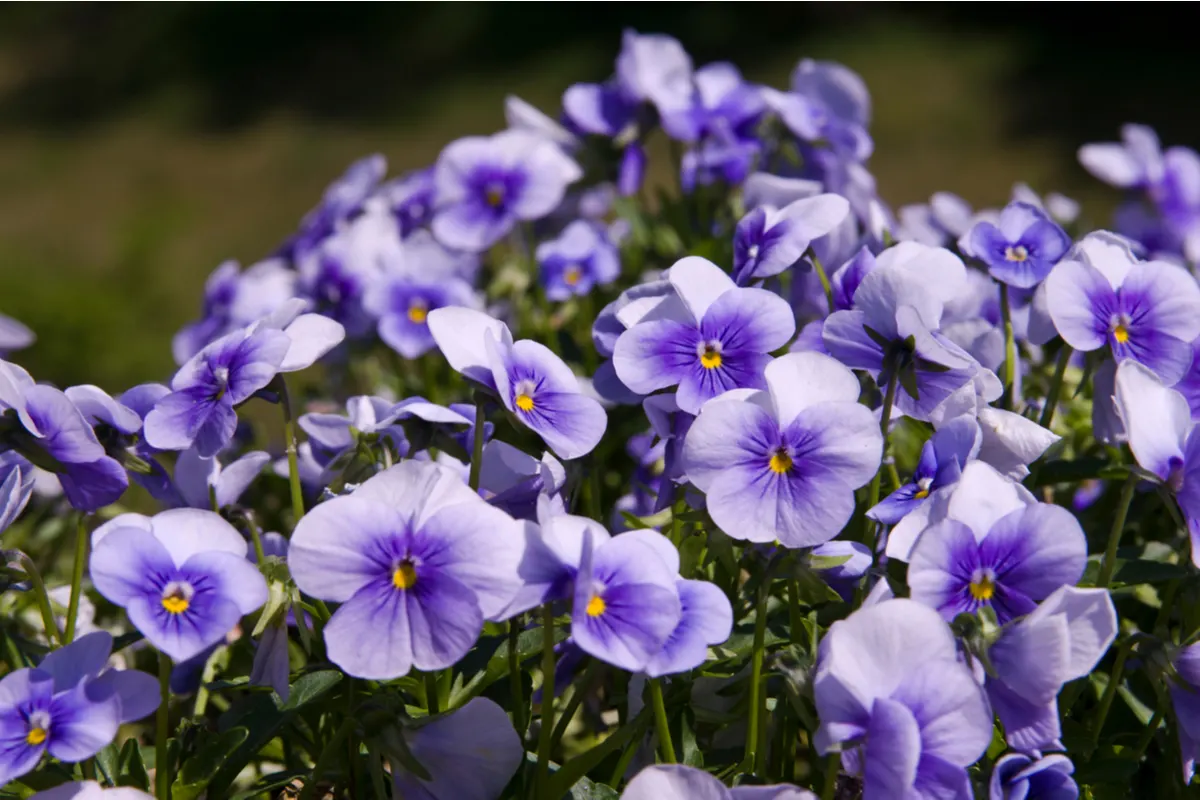
Pansies are adorable low-growing flowers with the happiest little faces.
Violas are a huge family of flowering plants that are found all over the world. There are hundreds of species in the genus, with numerous hybrids and varietals to peruse in every color (or multicolors) of the rainbow.
The garden pansy (Viola × wittrockiana) is one of the most beloved bedding plants for the cooler spring and fall weather. Wild pansy (V. tricolor) will bloom continuously until frost.
For native pollinator gardens, plant sand violets (V. affinis), evergreen violet (V. sempervirens), or bird’s foot violet (V. pedata).
Pansies will freely seed themselves through the garden, although hybrid varieties likely won’t come true from seed.
You can sow pansy seeds outdoors in autumn, or in early spring as soon as the soil can be worked. Barely cover the seeds with soil. Depending on the ground temperature, pansy seeds can take 20 to 50 days to poke up through the soil.
Hardiness zone: 3 to 10
Sun exposure: Full sun to part shade
Bloom time: April to October
Attracts: Butterflies
Link to order HERE
3. Lupine (Lupinus spp.)
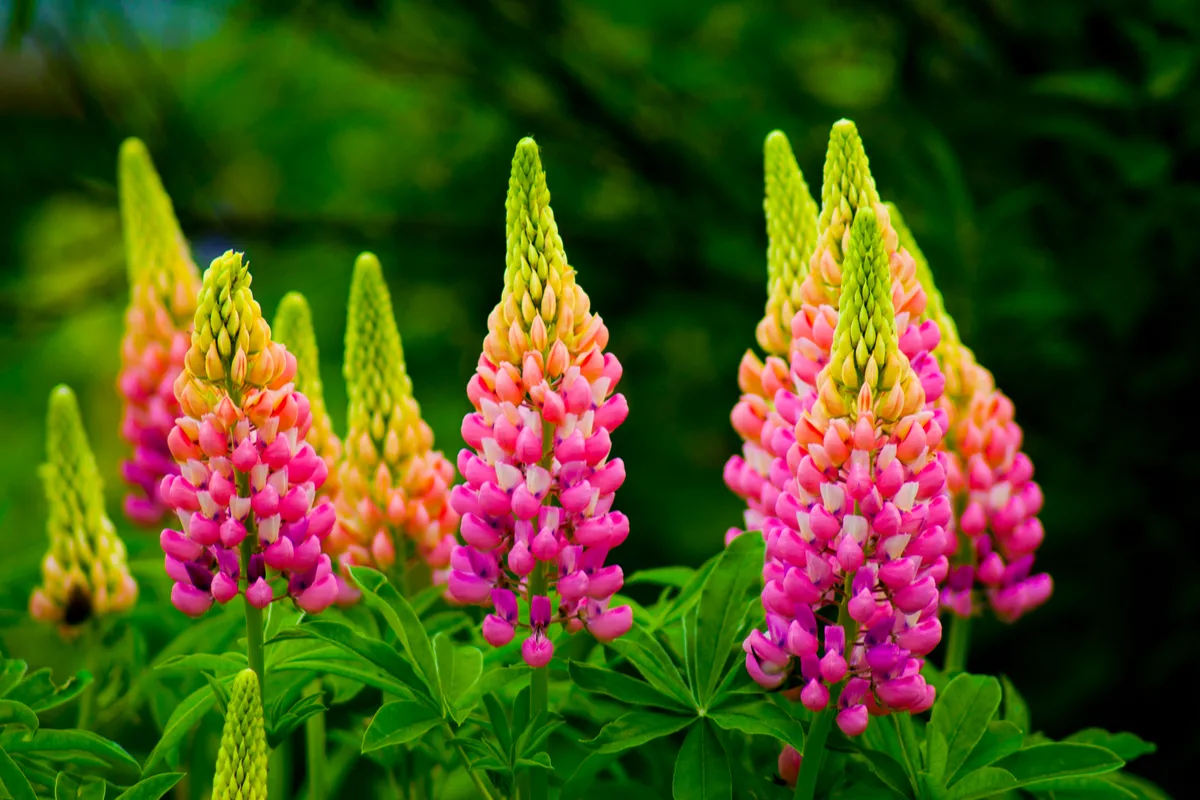
Lupines in flower are a feast for the eyes, blanketing the garden with its colorful spires beginning in late spring.
The enormous and erect floral spikes, reaching up to 4 feet in height, are impossible to miss. Arising above the foliage, the racemes are densely packed with small and delicate clamshell flowers in white, pink, yellow, red, blue, purple, or bicolor.
Lupines aren’t just gorgeous, they are practical assets too. As members of the Fabaceae family, lupines are nitrogen fixers that will enrich your soil wherever you plant them.
Most lupine species are indigenous to North America, with Big Leaf Lupine (L. polyphyllus) and Wild Lupine (L. perennis) as perennial garden favorites. The crossing of these and other lupine species has created a profusion of hybrids that have been specially bred for improved vigor and vibrance.
Lupine seeds should be soaked in water for 24 hours before sowing them in the garden. Seed planting can be done in early spring, as soon as the soil can be worked. Lupine seeds can take anywhere from 14 to 60 days to germinate.
Growing lupines requires patience and you’ll be amply rewarded with the bold and striking blooms in their second year.
Hardiness zone: 3 to 7
Sun exposure: Full sun
Bloom time: May to July
Attracts: Butterflies, hummingbirds, and bees
Link to order HERE
4. Sweet Pea (Lathyrus odoratus)
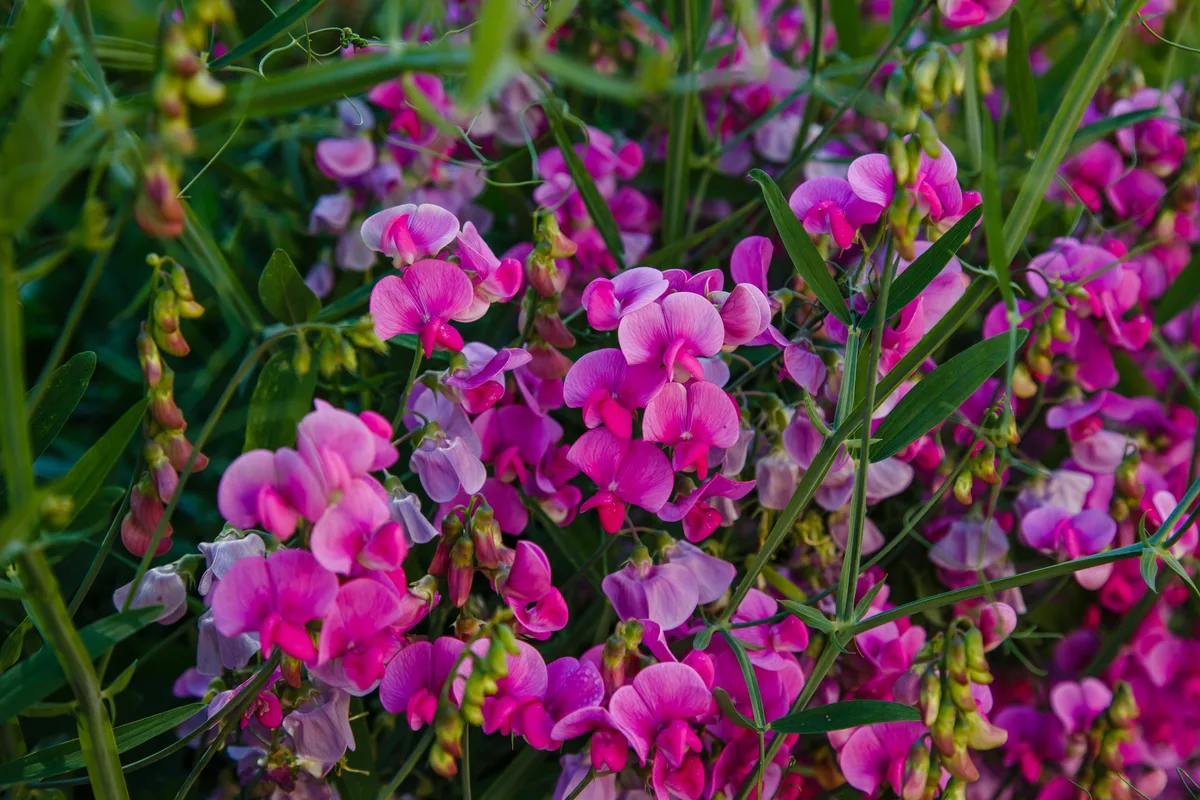
Sweet pea is an intensely fragrant annual bloomer with exquisite winged and ruffled flowers that come in every color except yellow.
The blooms are excellent as cut flowers. A cut-and-come-again specimen, the more you pick sweet pea flowers, the more they will bloom. And as a legume, the plant itself is a great little nitrogen fixer.
Sprawling up trellises and wigwams with its twining tendrils, sweet pea vines will climb up any nearby support. Without a structure, sweet peas will form charming bushy mounds.
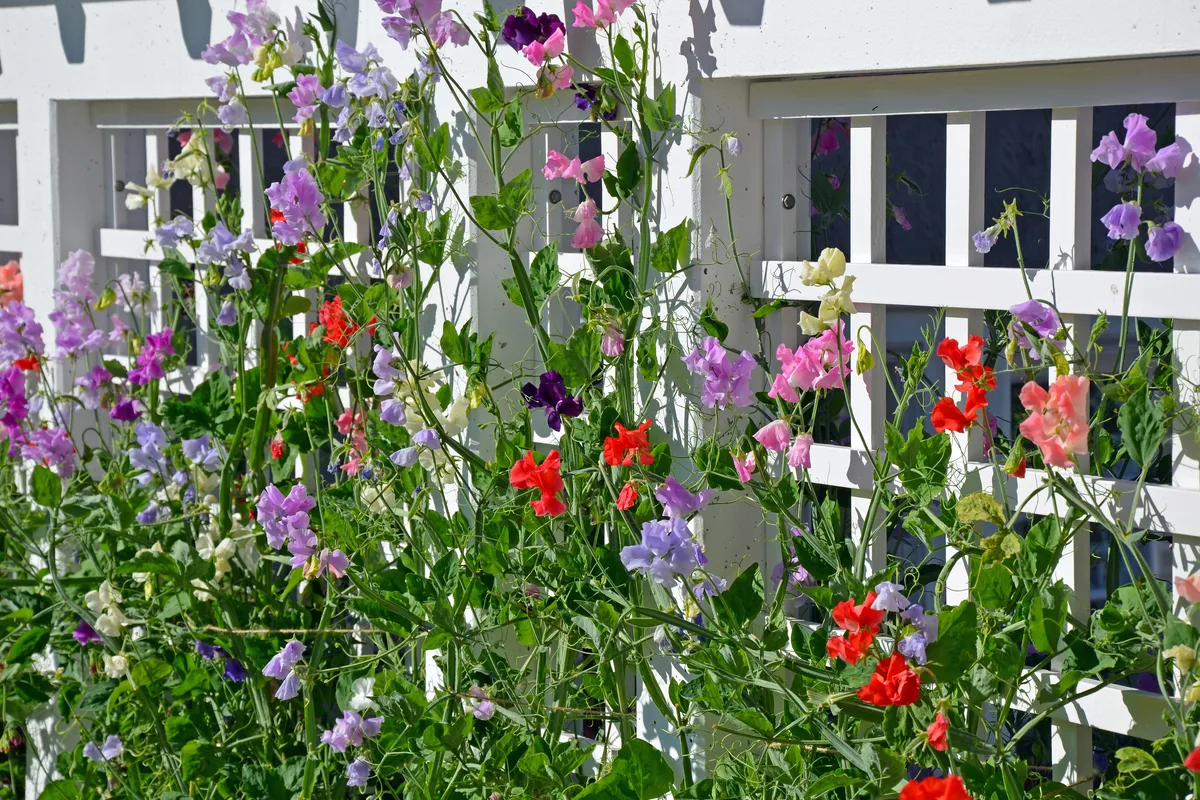
Sweet peas are native to the Mediterranean and will bloom continuously from spring to fall in cooler summer climates. When things get too hot and humid for sweet pea, the plants will begin to fade. Keeping the soil cool with mulch will go a long way toward prolonging bloom.
Growing sweet pea from seed is all about getting the timing right. In zones 7 and below, direct sow sweet peas in the garden before the last frost date, in late winter or early spring. In zones 8 and above, plant seeds in late fall.
Before sowing, soak sweet pea seeds in water for 24 hours and germination should only take 7 to 15 days.
Hardiness zone: 2 to 11 (annual)
Sun exposure: Full sun
Bloom time: May to September
Attracts: Bees and butterflies
5. Poppy (Papaver spp.)
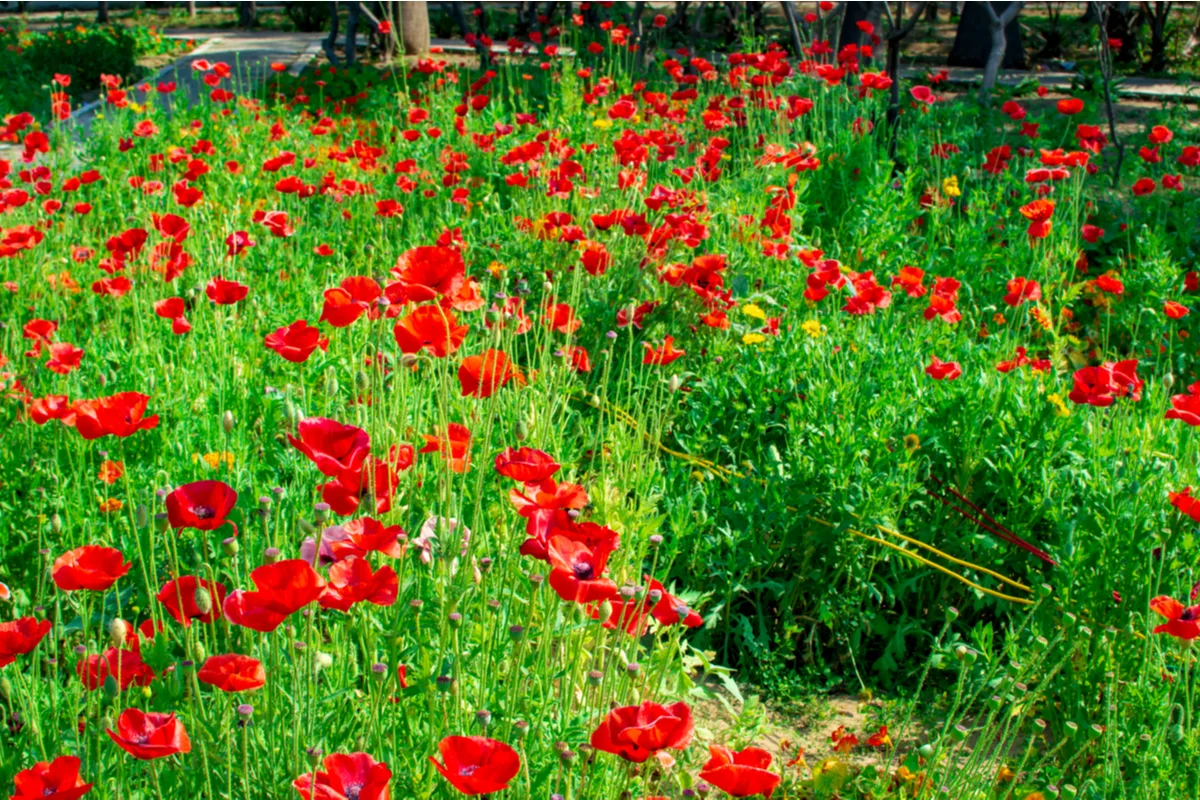
Poppies are hardy annual or perennial wildflowers that need only be planted once. Once established, poppies will self-seed and spread through the garden every year.
The field poppy (P. rhoeas) is famous for its papery scarlet petals with dark blotches in the center. The Oriental poppy (P. orientale) is another excellent choice, available in scads of colors ranging from pinks, oranges, purples, and whites. The breadseed poppy (P. somniferum) produces breathtaking mauve flowers along with edible poppy seed.
There’s also California poppy, Iceland poppy, Spanish Poppy, Moroccan poppy, and Welsh poppy – truly a smorgasbord of poppy options.
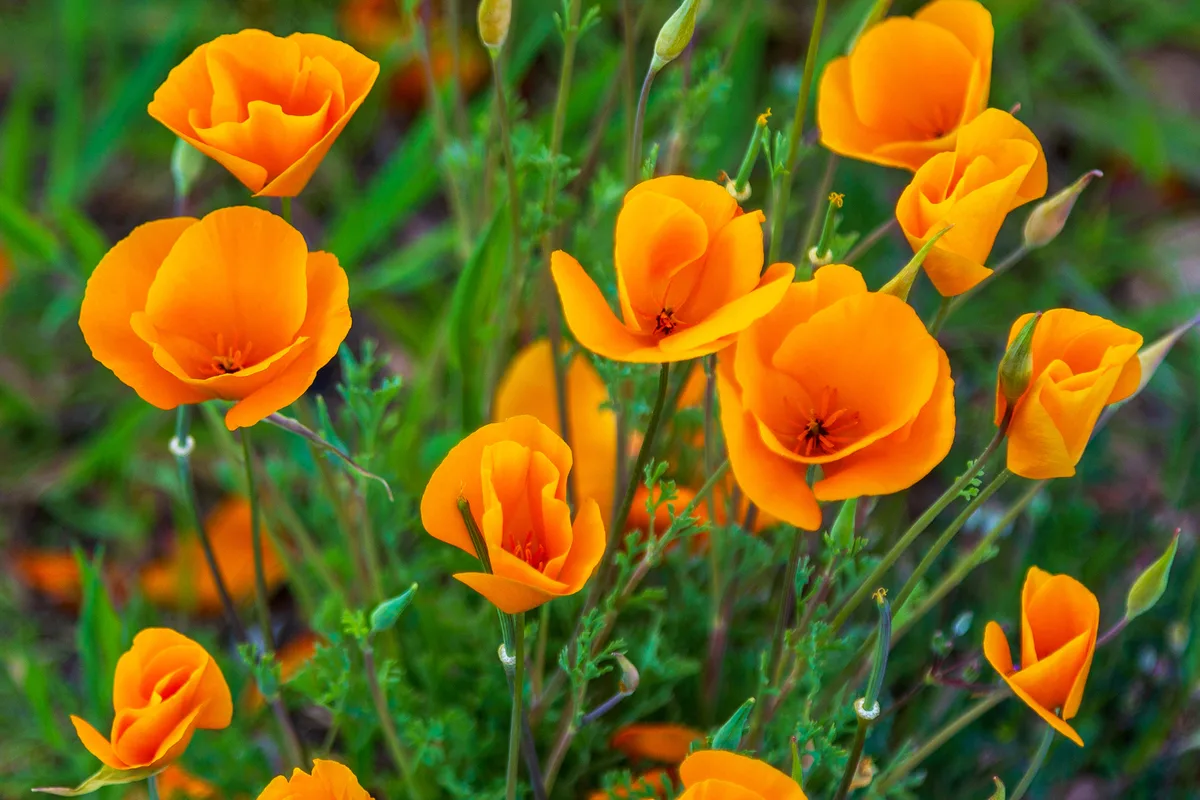
Sow poppy seeds outdoors before the last frost in early spring. There’s no need to bury them, simply scatter seeds over the surface of the soil. Seeds will sprout in 20 to 30 days.
Hardiness zone: 3 to 10
Sun exposure: Full sun
Bloom time: June to August
Attracts: Butterflies and bees
CONTINUE READING IN PAGE 2
